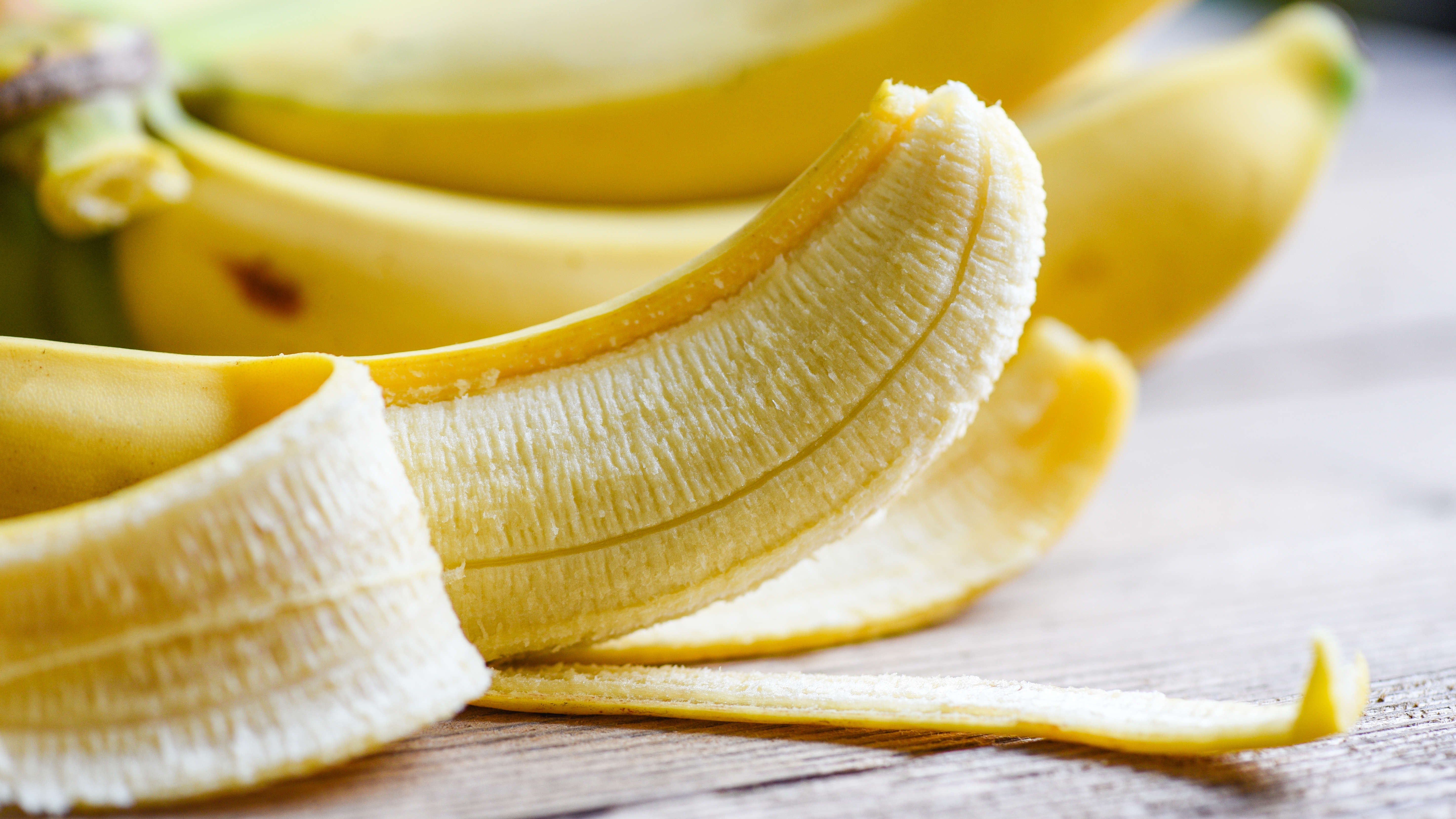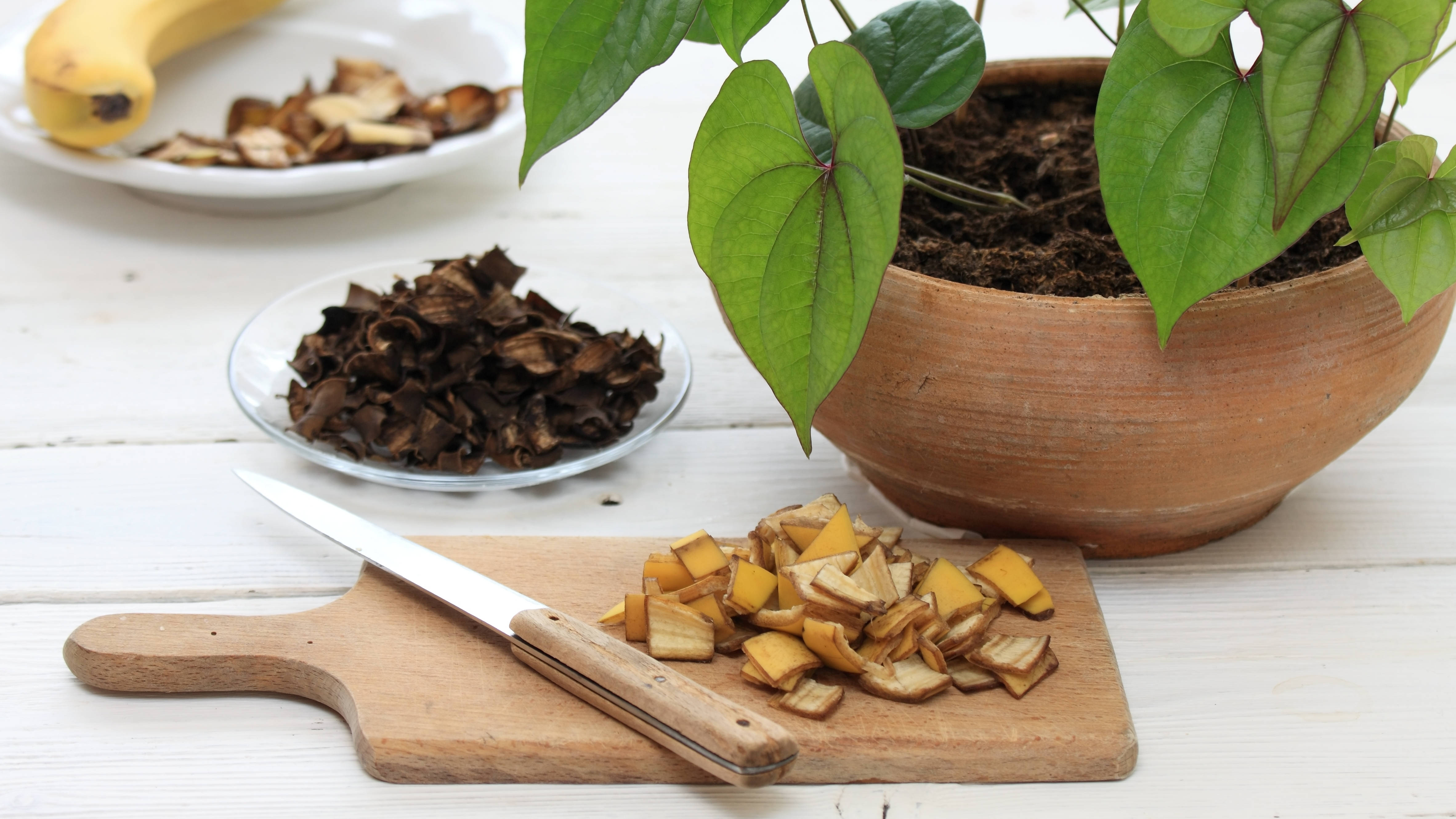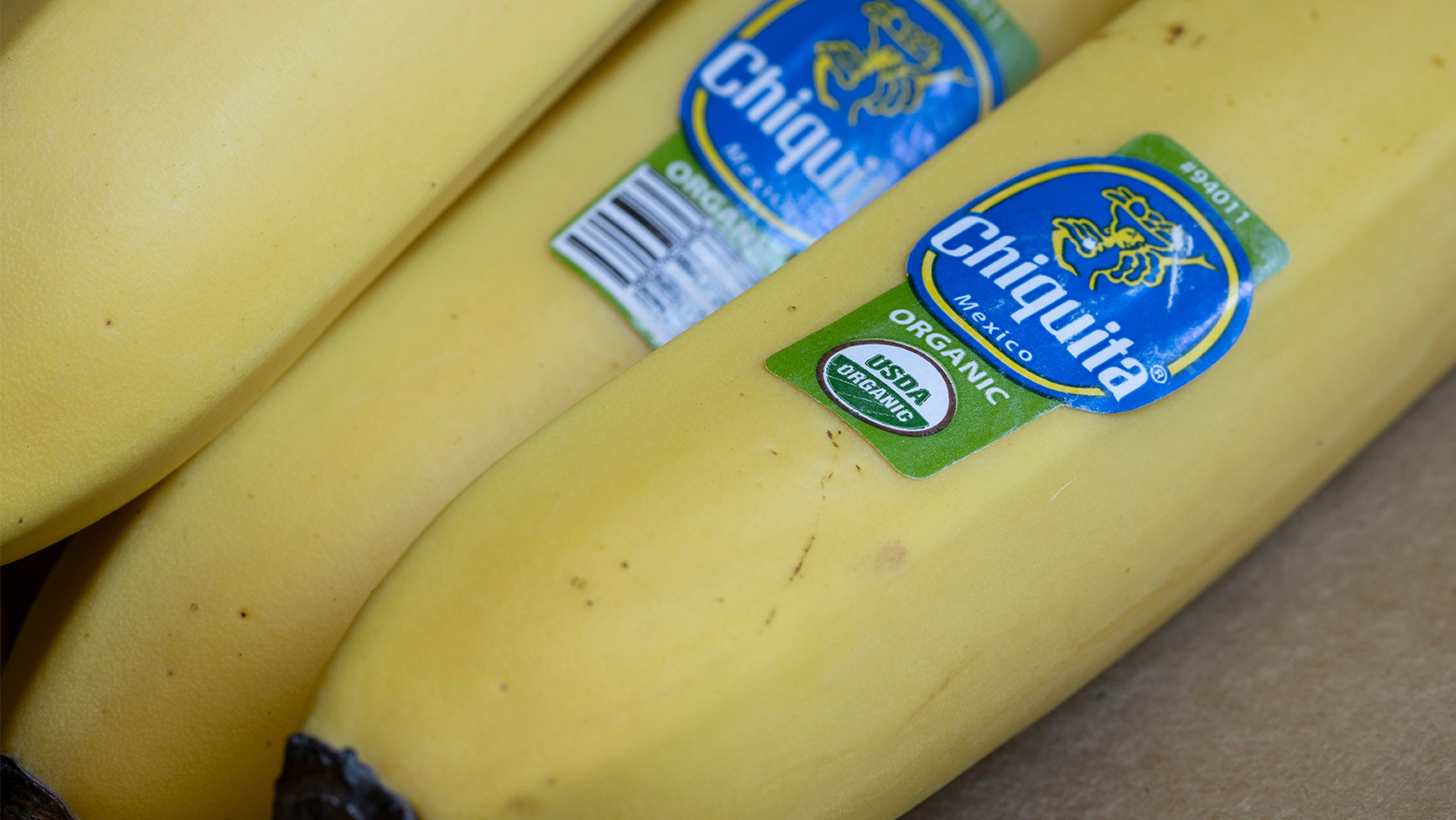That sad-looking plant in the corner might just need a banana, or rather, the peel you'd normally toss in the trash. Those bright yellow jackets we discard can seriously nourish your plants. Used the right way, banana peels can make homemade fertilizer that’s both budget-friendly and effective.
Packed with potassium, phosphorus, and calcium, banana peels offer key nutrients that help your plants grow faster and stronger. They’re especially great for flowering plants and edible gardens, where healthy roots and vibrant blooms matter most.
It’s also a natural pest repellent, making this one of the easiest and most sustainable upgrades you can add to your routine. Here's three ways you can reuse your banana peels for a more fruitful garden.
1. Transform peels into nutrient-rich compost

(Image: © Shutterstock)
Composting banana peels is perhaps the most efficient way to capture their gardening benefits. While they don't break down quickly on their own, banana peels actually help accelerate the decomposition process of your entire compost heap.
These yellow wonders add nitrogen-rich "green" material to your compost bin, balancing the carbon-heavy "brown" materials like dried leaves and cardboard. For faster decomposition, chop the peels into smaller pieces before adding them to your bin.
If you don't have space for a traditional compost setup, alternative options like the Sage (Breville) FoodCycler works well. It breaks down food waste with minimal noise and turns it into odorless eco chips.
2. Create an instant underground fertilizer

(Image: © Shutterstock)
For a more direct approach, you can skip the composting process entirely and use banana peels as an in-ground fertilizer. This technique delivers nutrients directly to your plants' root zones where they're needed most.
To do this, simply chop banana peels into small pieces (smaller chunks break down faster) and bury them just a few inches beneath the soil around your plants. As the peels decompose, they'll slowly release their nutrients into the surrounding soil.
This method works particularly well for potassium-loving plants like roses, tomatoes, peppers, and most flowering plants. The slow-release nature of this approach means your plants receive a steady supply of nutrients rather than the quick burst that liquid fertilizers provide.
3. Brew nutrient-rich banana tea

(Image: © Shutterstock)
Perhaps the quickest way to harness banana power is by creating a tea that can be used as a liquid fertilizer. This simple process extracts the nutrients from the peels, creating a potent plant tonic that's immediately available to your garden.
To make banana peel tea, place several banana peels in a large jar or container and cover completely with water. Let them soak for 2-3 days then finish by straining out the peels. Then use the resulting amber-colored liquid to water plants
This nutrient-rich solution is perfect for outdoor plants, especially during the growing season when they're actively developing flowers and fruit. Dilute the tea with equal parts water before applying to avoid overwhelming your plants with too much of a good thing.
Keep in mind that while this concoction works wonders in the garden, it's best to avoid using it on houseplants. The sweet, decomposing smell of banana tea can attract fruit flies and other pests indoors — not exactly the gardening win you're looking for.
Considerations when using banana peel
While banana peels offer excellent benefits, there are a few things to keep in mind for the best results:
Don't overdo it: Banana peels are rich in potassium but contain limited amounts of other essential nutrients. They shouldn't replace your regular fertilizing routine but rather supplement it for an extra boost.
Avoid whole peels: Tossing entire banana peels directly onto your garden isn't ideal. They take too long to break down and may attract unwanted visitors like rodents or fruit flies. Always chop them up or process them through one of the methods above.
Choose the right plants: Focus your banana peel efforts on plants that particularly benefit from potassium. Flowering plants, fruits, and vegetables will show the most noticeable improvements from this targeted treatment.
Consider organic sources: If possible, use peels from organic bananas to avoid introducing any pesticide residues into your garden ecosystem.
Now you've learned how to repurpose your banana peels to give your garden a boost, why not take a look at our other useful guides?
If you're looking to invite more wildlife into your yard, check out these 7 tips for attracting hummingbirds.
If you're struggling indoors too, learn how to revive a dying houseplant — 7 steps that actually work. And for a complete outdoor transformation, don't miss 5 easy tips to fix bare patches on your lawn
.png)











 English (US) ·
English (US) ·